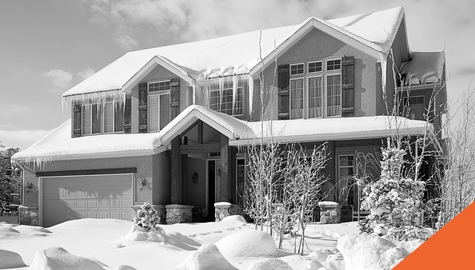Four Tips for Motorcycle Riding in the Fall
Wednesday, 27 September 2023
With summer officially behind us, motorcycle enthusiasts across Canada are gearing up for another season of scenic rides in autumn. While riding a motorcycle can be fun and exciting, there are more risks involved than driving a car - especially in the fall. If you plan on taking your bike out over the next couple of months, there are a variety of factors you should consider.
Changing weather conditions, seasonal maintenance, safety tips, and planning your routes are all things that should be kept front of mind. Doing so will not only let you enjoy the final rides of the year, it will also help you avoid making a claim with your motorcycle insurance provider.
Prepare for the elements
During autumn, the weather can vary from day to day and can even change at a moment’s notice. Some days might be dry and sunny, while others are cold and wet. The latter can also lead to frost developing on the road. There is also the fact that leaves will start to fall from trees and will be scattered all over. With that said, it’s always best to adjust your riding habits based on these conditions.
You should also invest in the proper gear if you plan to ride frequently in the fall. This includes the essentials like a helmet, gloves, jacket, boots, and pants. Since temperatures can drop dramatically on any given day, be sure to layer up and wear waterproof clothing if possible. With the shorter days and less sunlight, it’s also recommended that you wear reflective apparel for night-time rides.
Follow a maintenance checklist
An important part of making sure your motorcycle is ready for the fall is following the proper maintenance steps. Here are some essential tips to keep your motorcycle in top shape:
- Inspect your tires. Check the tire pressure and tread depth on a regular basis. The cooler tires can affect tire pressure and traction, which are crucial when navigating the roads this time of year.
- Consider changing your oil and filter. The colder weather might require you to use an oil with a different viscosity. It’s best to check your owner’s manual to confirm what the manufacturer recommends for your bike.
- Check your brakes. As mentioned earlier, wet roads are common in the fall, so ensuring they are in top shape will help you avoid hitting any obstacles if you suddenly need to use your brakes.
- Test your battery. Extreme weather conditions can impact its effectiveness. Make sure it is fully charged and that there is no corrosion on its terminals. This way, you won’t have to worry about being stranded if the battery were to die.
- Check your lights. With the shorter days, there is a chance you might be riding when it is dark out. Ensuring your lights work correctly will give you the best view of your surroundings and help other motorists see you.
By following these steps, you’ll have less risk of getting into an accident and filing a motorcycle insurance claim.
Practice safe riding
When riding your motorcycle, it’s always important that you keep an eye out for wildlife and pedestrians. There are various types of animals that are nocturnal and only come out when it is dark. If you are going to be in a rural area, proceed with caution and be on the lookout at all times. The same is true when riding in a neighbourhood. Many families like to go out for a stroll at night, people take their dogs out for a walk in the evening, and others enjoy going for a run along the side of the road. Be respectful and follow the posted speed limits so that everyone’s safety is taken into consideration.
You should also pack an emergency kit and keep it with you whenever you ride. This can consist of a variety of things, like first aid supplies, tools to repair your bike, a flashlight with extra batteries, extra clothes, a phone charger, and a portable battery. These are common examples of items that can save you a lot of stress if the unexpected were to happen. Of course, there are many other items that could help you in a pinch. Take a few moments to think about what you might need if you were to be stranded while on a solo ride, and pack these items so you can hit the road worry-free.
Plan out your route
With the changing colours of the leaves making for vibrant scenery, you might be tempted to take your bike out to new areas to take in some incredible views. If so, make sure you research the area so you are more familiar with it. Make note of areas where you can pull over if needed, places to fuel up if you are running low on gas, and landmarks that will help guide you if you are lost.
If possible, let a family or friend know when and where you are going for your ride. This can come in handy if you need someone to come pick you up if your bike breaks down. If all goes well, be sure to check in with them once you are home safe so that they know you made it back in one piece.
Whether you are new to owning a motorcycle or are a seasoned rider, following the steps above will allow you to get the most out of your bike before the winter arrives. If you are in need of advice regarding the coverage you have on your bike, visit your nearest BIG Branch or contact a BIG broker to receive a motorcycle insurance quote.



